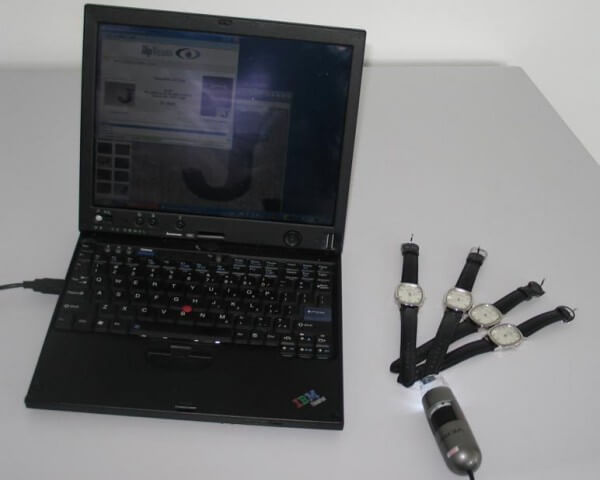“Every manufactured product has a built-in identification potential, a sort of DNA, in that every single surface has observable differences in structure that make it unique,” Roland Meylan, Corporate Communications Manager for AlpVision, explains. “We have developed a digital imaging solution based on mathematical algorithms that can track these products’ “signature” and hence identify them as unique. We simply take the object as is, and observe it in an intelligent way to memorise its print. We then store this in our database as a reference for comparison with other objects we are asked to authenticate. An additional advantage is that we can work remotely.”
Nothing is added to the watch
In practical terms, AlpVision can incorporate its solution into existing production lines, most of which are already equipped with machine-vision systems for quality control. These devices have sufficient resolution to take the prints which will make up a library of images for authentication. Note that prints can be taken through a sapphire crystal or a case back, to read the surface of an inertia block, for example. At the other end of the process, for capturing images “in the field,” all it takes is a computer fitted with a USB microscope, which can be purchased for around a hundred dollars. Once an image has been captured and sent, AlpVision’s system compares and analyses it to determine whether the object in question is genuine, i.e. conforms to the stored reference image. The advantage is that the system can trace products throughout their entire lifetime.

“Because our system is perfectly compatible with existing equipment, we’re inviting potential customers to purchase our software and a license,” continues Roland Meylan. “Our system adds no markings or anything else to the watch, hence no changes need be made to the existing production process. Capturing the images is just a simple additional stage. The objects in themselves are sufficiently unique to be able to identify them without any particular skills. All we need is a photo. The machine delivers the verdict.”
Fifteen years' research
Of course, AlpVision’s system doesn’t address that part of the counterfeit market that is kept alive by customers who are fully aware of the nature of the product they are buying. “We don’t intervene here as we have no hold on demand,” Roland Meylan observes. “We are much more involved in quality counterfeiting, meaning fake watches that are passed off as the real thing. This market is supplied by counterfeiters who often use parts from one genuine watch to produce several fakes, and who aim to blend into traditional distribution channels. Given the often high value of luxury goods in general and fine watches in particular, our solution is a means of providing customers with an authentication service, which can easily become an additional selling point for the companies in question. Furthermore, firms can use their after-sales service to gradually expand their database to include watches that are already in circulation.”
AlpVision isn’t new to this field. Established in 2001 and in the black by 2003, the company first proposed identification systems for the pharmaceutical industry, another target for counterfeiters with the dangerous consequences we all know. Now AlpVision is extending its reach to include the watch industry, as well as a successful move into the aeronautics and automotive sectors. But have watch companies taken the bait? Initial contacts are being made, the one drawback being that the system is apparently so simple, companies are convinced they can copy it themselves. What they don’t seem to realise is that AlpVision’s founders, all engineers from the Ecole Polytechnique Fédérale in Lausanne, have been working on it… for fifteen years !















